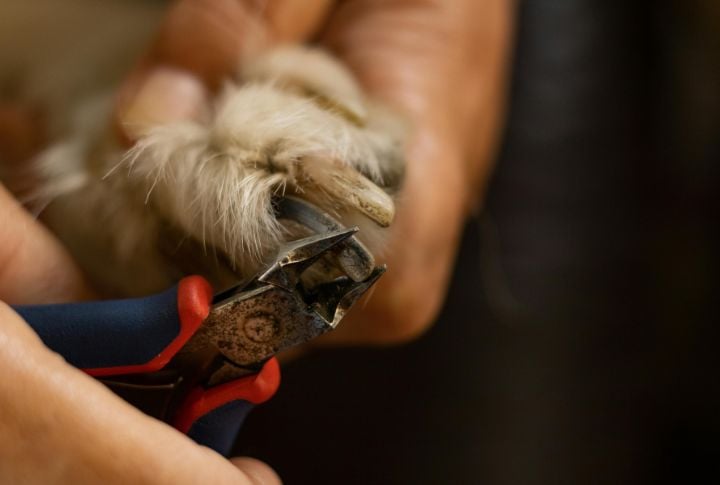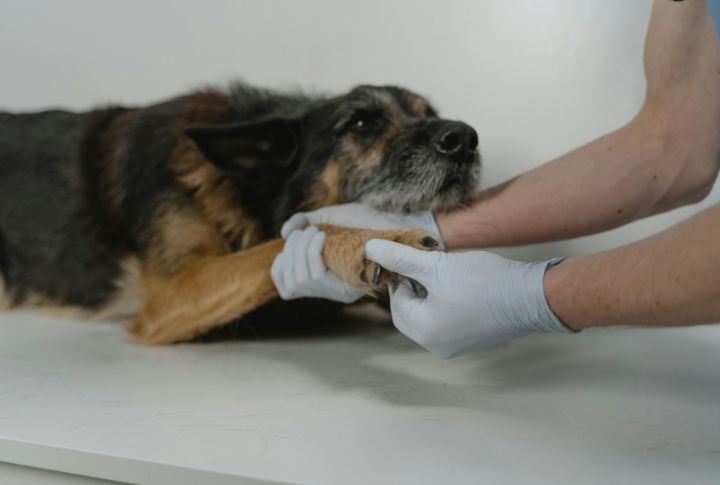15 Ways To Keep Your Dog’s Paws Healthy And Strong

A dog’s paws take on the world—every adventure, every step, and every unexpected detour. Without proper care, small issues can turn into painful problems, making daily walks uncomfortable. The good news? Keeping those paws in top shape is easier than you think. Here are 15 essential ways to protect, strengthen, and care for your dog’s paws year-round!
Routine Cleaning

A simple walk through the neighborhood leaves behind more than just muddy paw prints. Road salt dries out the skin, fertilizers can cause irritation, and chemical residues linger long after paws have left the pavement. To prevent these from becoming bigger issues, a quick rinse or wipe can make all the difference.
Paw Pad Moisturization

Walking on cracked pads is like stepping on sandpaper barefoot—the discomfort builds with every step, making movement a struggle. Harsh weather and rough terrain strip away the moisture and leave paws vulnerable. However, applying a hydrating balm can restore elasticity and turn dry, rigid pads into soft, durable cushions once again.
Regular Inspections

Paws take a beating, and small problems often go unnoticed. That’s why it’s important to check for cuts, swelling, or debris stuck between pads after every walk. Doing so can prevent minor irritations from turning into infections. By catching issues early, you’ll ensure faster healing and fewer vet visits down the road.
Hair Trimming Between Toes

Fluffy paws may look cute, but too much fur can trap dirt and moisture. For example, snow can form painful ice balls, and wet fur can encourage bacterial growth. That’s why trimming the fur between the toes is important—it keeps paws clean, reduces the risk of infections, and makes each step more comfortable.
Seasonal Paw Protection

Sidewalks shouldn’t feel like lava in summer or ice traps in winter. Scorching pavement burns delicate pads, while road salt causes painful cracks. Booties offer great protection, but wax-based balms create a protective barrier for dogs who refuse to wear them. Seasonal paw care isn’t optional; it’s survival.
First Aid For Injuries

Even the most cautious dogs can step on something sharp or get a scrape from rough terrain. While a small cut may seem harmless, bacteria can spread quickly. Cleaning wounds with antiseptic, covering deeper cuts, and keeping an eye on healing can prevent minor injuries from turning into more serious health concerns.
Nail Maintenance

Overgrown nails can throw off a dog’s balance, forcing their paws into awkward positions and straining their joints. Regular trimming helps keep their movement smooth and prevents painful pressure on the pads. Trimming their nails now helps reduce the risk of joint problems in the future.
Allergy Management

A dog that constantly licks or chews its paws isn’t just bored—they could be uncomfortable. Allergies, whether from food or the environment, often show up as redness or irritation between the toes. Identifying the trigger and using vet-approved solutions can bring relief. If the problem persists, it’s best to book an emergency appointment.
Paw Pad Toughening

Soft paws struggle on rough ground, making even a short hike uncomfortable. However, gradual exposure to natural terrain helps build resilience, which can prevent cuts and soreness. After all, zoomies should be fueled by excitement, not discomfort, and strengthening their paws ensures they can run with confidence.
Weight Management

Excess weight puts more pressure on paws than most owners realize. Over time, additional strain leads to cracked pads and sore joints. Fortunately, maintaining a balanced diet and regular exercise prevents these issues. A little weight control today means lighter, pain-free steps for years to come.
Hydration

Hydration affects more than just thirst; it plays a major role in paw health. Without enough water, paw pads dry out and crack, making every step painful. Thankfully, providing fresh water throughout the day keeps paws flexible and resilient. As we all know, healthy skin starts from the inside out.
Dietary Supplements

Paw health doesn’t just depend on external care; nutrition plays a big role, too. Omega-3s, biotin, and vitamin E help strengthen pads while reducing inflammation. Since itchy paws often signal nutritional gaps, the right supplements provide lasting relief. No dog should have to choose between chewing their feet or enjoying their favorite treats.
Environmental Awareness

A dog’s paws are its direct connection to the world. It chases butterflies through grassy fields and trots alongside its favorite humans. But the world isn’t always kind. Sharp gravel or hidden glass can turn strolls into unexpected injuries. This is why staying mindful of where dogs walk protects their paws and keeps every adventure worry-free.
Paw Massage

Massaging your dog’s paws does more than just feel good; it’s a hidden health hack. Increased blood flow helps with healing, while gentle pressure reveals any unnoticed injuries. Since most dogs already love belly rubs, adding a quick paw massage makes for an easy, beneficial routine.
Regular Vet Checkup

Dogs may think they have everything under control, but their paws tell a different story. From hidden infections to sneaky joint stiffness, regular checkups uncover what they can’t say out loud. A quick vet visit ensures their paws stay in top shape and free from hidden concerns.






